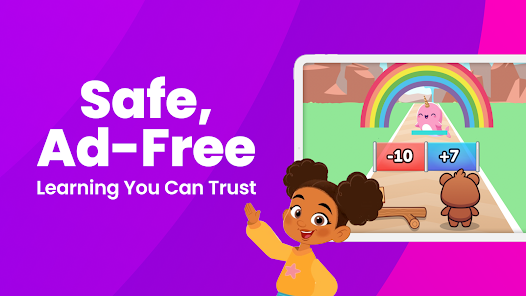Ask any parent these days and you’ll hear a common complaint: “My child just won’t sit still long enough to focus.” With cartoons playing in the background, YouTube clips on demand, and endless flashy content, kids seem to have shorter attention spans than ever. But here’s the twist—technology, something that is often blamed for the problem, can also help. Interactive learning games for kids, when used wisely, show that not all screen time is bad.

So what makes these games different from the regular screen use for cartoons and entertainment? It’s quite simple. Watching TV is passive. Toddlers end up slumping on the couch, laughing at the characters, and then ask for the next episode blindly. However, in an interactive learning game, they have to take part in it. That little bit of action keeps the brain alert. Over time, this practice works like exercise, thereby slowly strengthening focus.
Consider a puzzle game. First of all, a child may get frustrated because he/she cannot remember where a piece fits. They then start to notice patterns, they remember shapes, and they are happy when they strike the nail on the nail. It does not seem like studying for kindergarten prep (although it is), but it will help learn patience, problem-solving, and the importance of not giving up.
Another reason games work is the mix of fun and challenge. Children love scoring points, collecting stars, or “levelling up.” Educational games for kindergarten math or any other subjects use this natural drive to keep them going. Many even adjust the difficulty a bit harder if the child is breezing through, and easier if they’re stuck. This balance keeps the game engaging without making it too stressful, which helps hold attention.
According to experts, active learning engages the brain more than passive viewing. The different areas of the brain are simultaneously engaged in solving puzzles, spotting differences or remembering sequences. Compare that to cartoons, in which very little effort is required. No wonder kids who play such games as alphabet learning, even for just ten minutes, often show sharper focus than those who watch TV for the same time.
The design of a kindergarten learning app also plays a role. Most activities last five to ten minutes, which suits a child’s natural attention span. Gradually, these short bursts help stretch their ability to concentrate for longer periods. Parents often notice this: the same child who struggles with a 20-minute homework session can sit with a learning game for just as long.
There’s also the social side to this. Games that involve two or more players teach kids how to wait for their turn, listen, and follow rules. These small habits build patience and focus, which carry over into classroom settings.
Of course, no game is a perfect fix. Kids still need outdoor play, reading time, and family interaction. Games should be tools, not babysitters. Parents who set limits, pick the right games, and sometimes join in often see the best results.
To conclude, interactive games aren’t just shiny distractions. They can also be used in a moderate way to enhance attention spans, learn to be patient, and enjoy focus. And in the modern, distracted, busy world, that is a lesson that all children can learn.